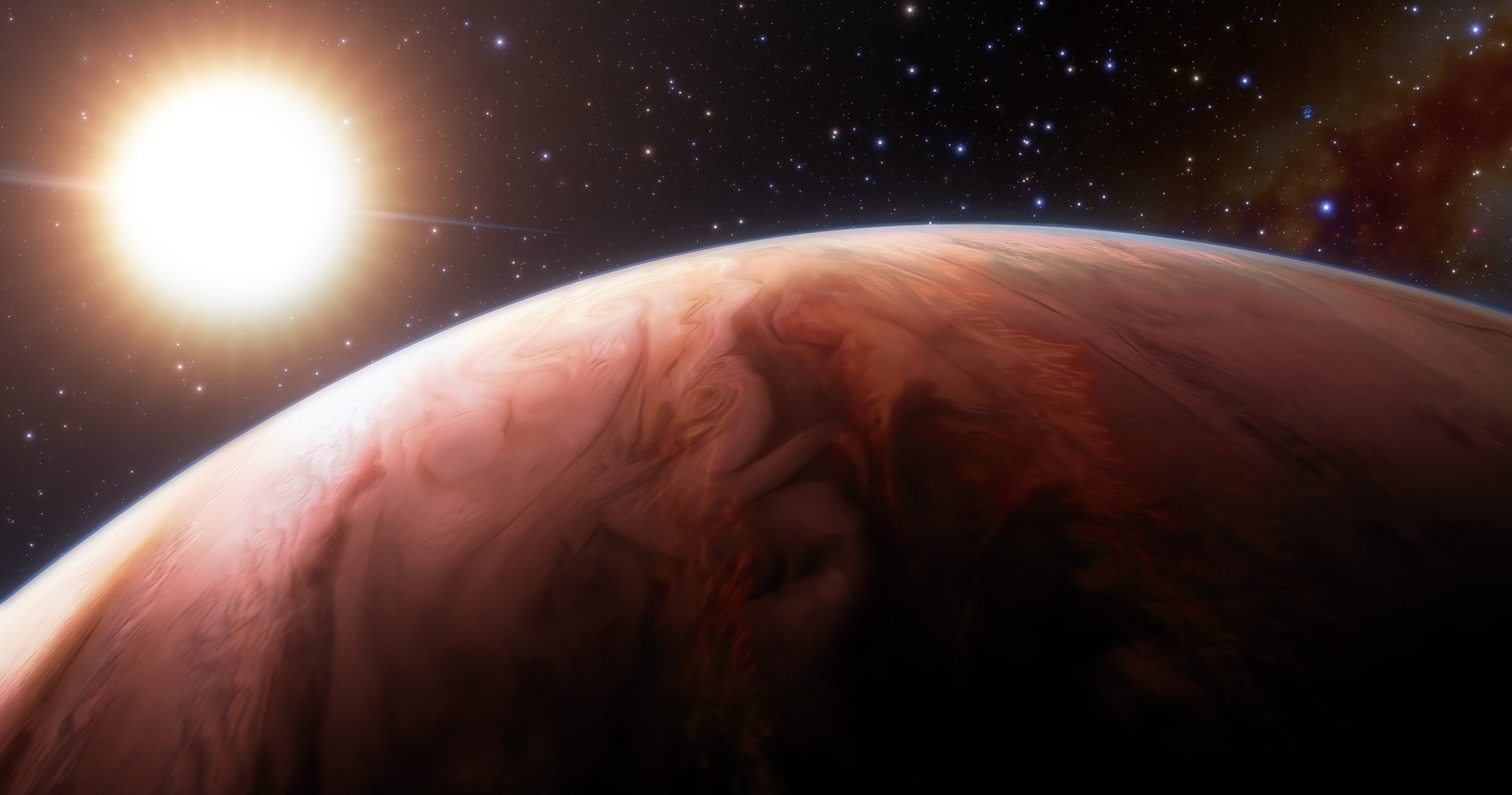NOIRLab: Gemini North Detects Multiple Rock-Forming Elements in the Atmosphere of a Scorching Exoplanet

WASP-76b is a strange world. Located 634 light-years from Earth in the direction of the constellation of Pisces, the Jupiter-like exoplanet orbits its host star at an exceptionally close distance — approximately 12 times closer than Mercury is to the Sun — which heats its atmosphere to a searing 2000°C. Such extreme temperatures have “puffed up” the planet, increasing its volume to nearly six times that of Jupiter.
At such extreme temperatures, mineral- and rock-forming elements, which would otherwise remain hidden in the atmosphere of a colder gas-giant planet, can reveal themselves.
Using the Gemini North telescope, one half of the International Gemini Observatory operated by NSF’s NOIRLab, an international team of astronomers has detected 11 of these rock-forming elements in the atmosphere of WASP-76b. The presence and relative amounts of these elements can provide key insights into exactly how giant gas planets form — something that remains uncertain even in our own Solar System. The results are published in the journal Nature.
Since its discovery in 2013 during the Wide Angle Search for Planets (WASP) program, many astronomers have studied the enigmatic WASP-76b. These studies have led to the identification of various elements present in the hot exoplanet’s atmosphere. Notably, in a study published in March 2020, a team concluded that there could be iron rain on the planet.
Aware of these existing studies, Stefan Pelletier, a PhD student with the Trottier Institute for Research on Exoplanets at the Université de Montréal and lead author on the paper, was inspired to explore the mysteries of this strange exoplanet and the chemistry of its searing atmosphere.
In 2020 and 2021, using Gemini North’s MAROON-X (a new instrument specially designed to detect and study exoplanets), Pelletier and his team observed the planet as it passed in front of its host star on three separate occasions. These new observations uncovered a number of rock-forming elements in the atmosphere of WASP-76b, including sodium, potassium, lithium, nickel, manganese, chromium, magnesium, vanadium, barium, calcium, and, as previously detected, iron.
Due to the extreme temperatures of WASP-76b’s atmosphere, the elements detected by the researchers, which would normally form rocks here on Earth, are instead vaporized and thus present in the atmosphere in their gaseous forms. While these elements contribute to the composition of gas giants in our Solar System, those planets are too cold for the elements to vaporize into the atmosphere making them virtually undetectable.
“Truly rare are the times when an exoplanet hundreds of light-years away can teach us something that would otherwise likely be impossible to know about our own Solar System,” said Pelletier. “That is the case with this study.”
The abundance of many of these elements closely match the abundances found in both our Sun and the exoplanet’s host star. This may be no coincidence and provides additional evidence that gas-giant planets, like Jupiter and Saturn, form in a manner more akin to star formation — coalescing out of the gas and dust of a protoplanetary disk — rather than the gradual accretion and collision of dust, rocks, and planetesimals, which go on to form rocky planets, like Mercury, Venus, and Earth.
